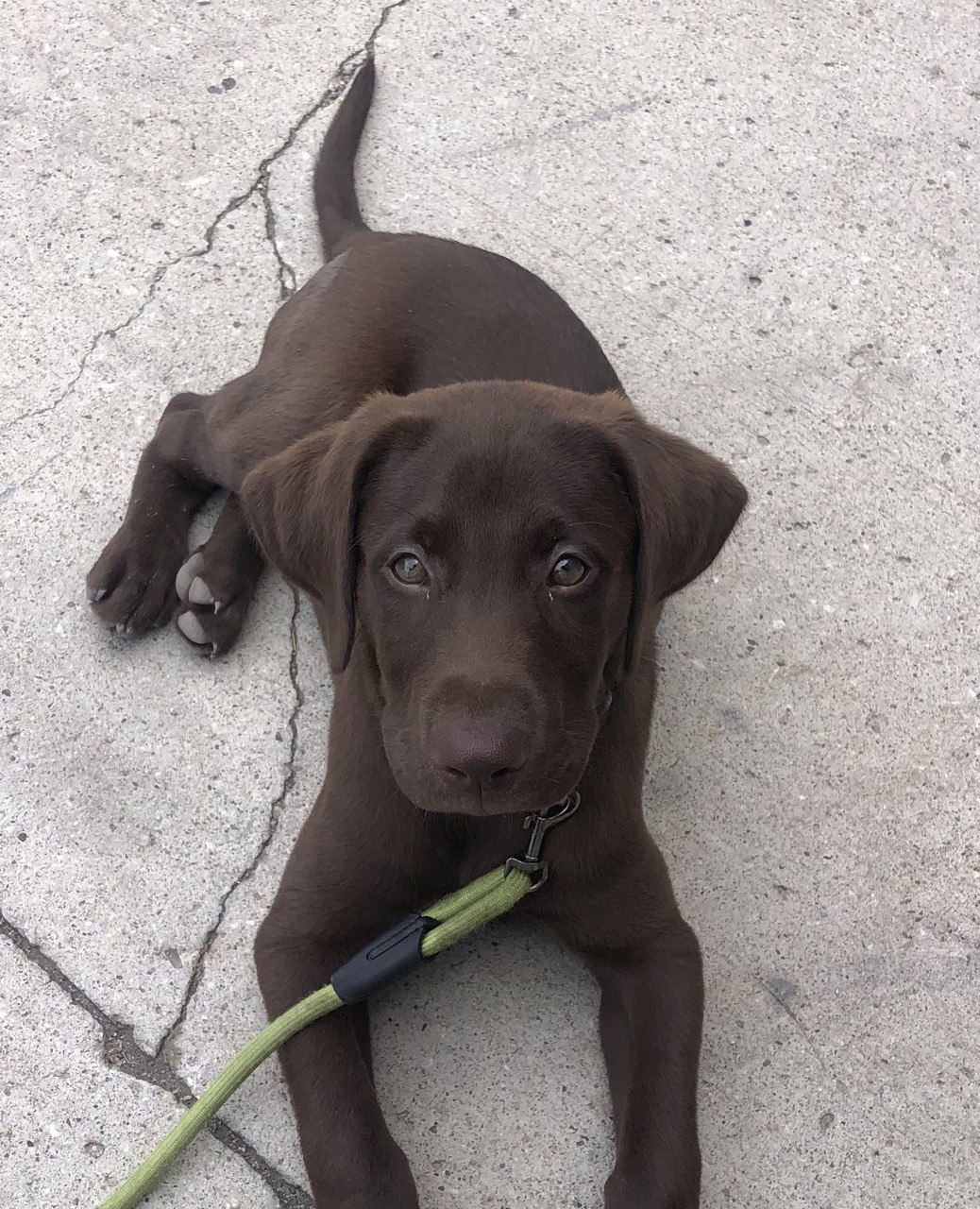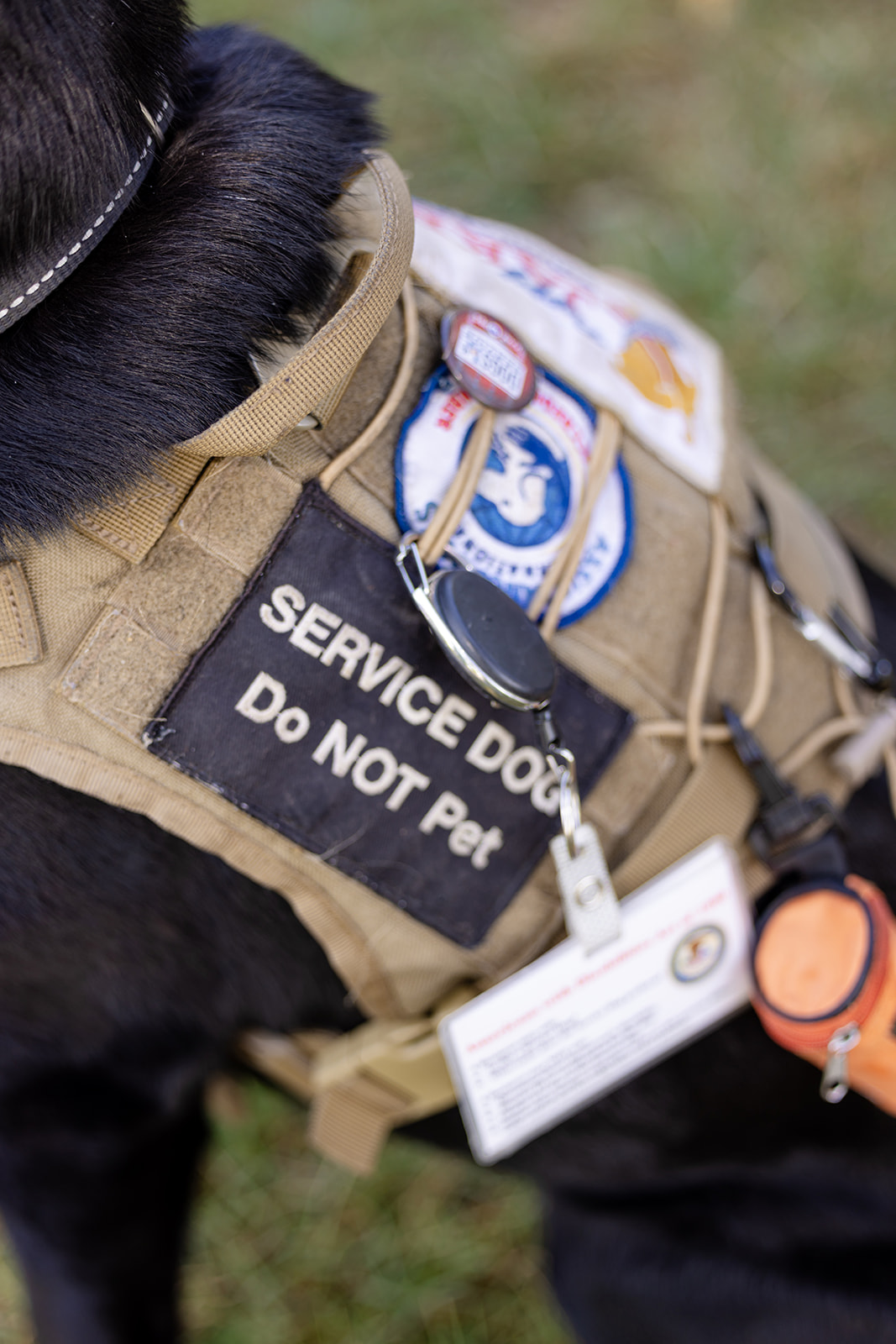We recently re-careered two dogs. One was a puppy, and the other was a Phase 3 service dog in training.
Let’s start with the Phase 3 dog. The decision to re-career a dog completely out of the program at this point in training is not taken lightly. There is a lot of time and money invested in dog that has been with us more than a year. To get this far, we’ve seen her potential, so we make modifications, evaluate and repeat, if necessary. In Phelan’s case we noticed her lack of interest in working early in training. Her Phase 1 trainer noted she was happier sitting on an elevated bed and watching than she was to engage in the training. Part of that is the Newfie (and Renee would make me say Golden Retriever, too) in her. Unlike with some other behaviors, this was something we could wait and evaluate to see if it would change as she matured. She had a strong Phase 2, and coming out of the prison we remained hopeful that she would continue down the service dog path. However, there were several recent observations that made it obvious she wasn’t cut out to be a service dog.
The hardest part in re-careering a dog is that we are dismissing a great dog. Sometimes we can send them down another path of service – skilled companion or therapy dog. But, sometimes the best decision is to allow the dog to be the best pet ever.
The reasons we re-career are often subtle, and to some, it may seem too critical. But we have a high standard for Puppy Jake service dogs. For example, I was shown a video of another Fabulous Flunkie learning how to shut a door. It always takes me a moment because I want to ask, did we make a mistake? In this case, this particular dog wanted to work, but she couldn’t regulate herself in public, and for service dogs, that isn’t just important, it is necessary. Similarly, in Phelan’s case, the uncertainty in public is a non-starter. This just another reminder that while each dog is a gift, but not every service dog in training has the gift to work in public.
Re-careering at this stage is becoming unusual. There are a few reasons for that. The first one is directly related to the quality of breeders we are working with. We are engaging purpose bred breeders who understand the traits that make a solid working dog. The second is we are learning that some behaviors are a no go, especially when they are present in the first couple of weeks of training. In the case of the puppy we recently promoted to “Fabulous Flunkie,” he was a SMART, confident puppy and was learning the obedience skills well. However, he had little desire to engage people. In fact, in our final evaluation, the trainer noted he was happier when he was entertaining himself. Again, our goal is honor the dog’s natural tendencies.
Both dogs have found great pet homes, and the check-ins find both dogs love swimming and their new pet dog lives.
That’s all we can ask.



